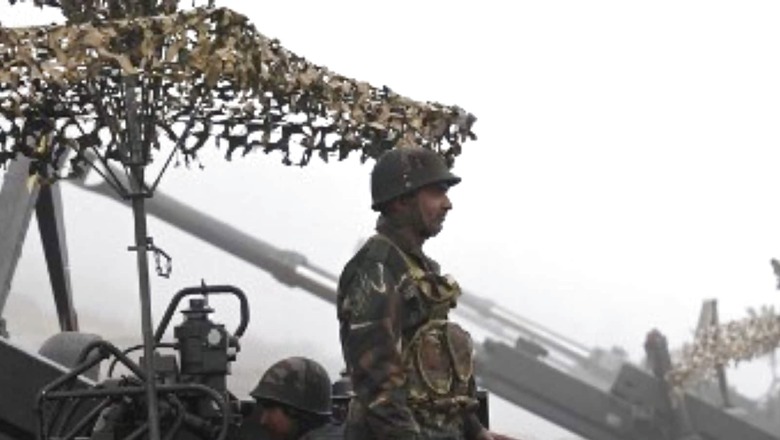
views
The Indian media recently accused the government of contradicting itself; this was about a Xiaogang (‘moderately well-off’) village located close to the Tibet boundary in Arunachal Pradesh.
Speaking at a TV channel event Chief of Defence Staff (CDS) Gen Bipin Rawat stated that the Chinese constructions were “well within their side of the LAC (Line of Actual Control)”.
“They have not transgressed anywhere on our perception of the LAC. There are different perceptions. We are very clear where the LAC lies because we have been told that this is your alignment of the LAC and this is the territory you are expected to defend. Chinese have a perception which in some areas we know and in some areas we don’t know because they have never really explained where the LAC lies according to their perception,” noted the CDS, who added: “As far as we are concerned, there is no such village development that has taken place on our side of the LAC.”
It is a fact that China has never shared with India their ‘perception’ of the boundary in the Eastern Sector.
Soon after, Ministry of External Affairs (MEA) spokesperson Arindam Bagchi clarified the MEA position regarding Chinese villages north of Arunachal Pradesh. “India never accepted China’s ‘illegal occupation’ of its territories,” he observed, adding: “China has undertaken construction activities in the past several years along the border areas including in the areas that it has illegally occupied over the decades. India has neither accepted such illegal occupation of our territory nor has it accepted the unjustified Chinese claims”.
How did the controversy erupt? Simply because a US report mentioned some construction activities on India’s border in the eastern sector; the US Department of Defence stated that sometime in 2020, China “built a 100-home civilian village inside disputed territory between PRC’s Tibet Autonomous Region and India’s Arunachal Pradesh state…”
‘Model’ villages started to mushroom on the border back in 2017, but because Washington has said so, it is suddenly noticed (and commented upon) by Delhi, which earlier had kept silent.
Interestingly, there was no real contradiction between the CDS and the MEA; they were simply not speaking of the same thing. The MEA spoke of the International Border (IB), which corresponds more or less to the McMahon Line, while the CDS was commenting on the LAC; the two do not exactly tally in several places in Arunachal Pradesh, which become known as ‘disputed’ areas.
Longju, the village cited in the Pentagon report, is located south of the IB and north of the LAC.
Longju’s Historical Significance
On August 28, 1959, the Indian Ambassador in Beijing sent a strong note to China’s Foreign Ministry, protesting that Chinese troops had violated Indian territory. The note said, “A serious instance of violation of the Indian border and unlawful trespass into Indian territory by Chinese forces has just been brought to the notice of the Government of India. On the 25th August a strong Chinese detachment crossed into Indian territory south of Migyitun on the NEFA (North East Frontier Agency) border and fired without notice on an Indian forward picket (of the 9 Assam Rifles). They arrested the entire picket which was twelve strong but eight Indian personnel somehow managed to escape. Thereafter the Chinese detachment outflanked the Indian outpost at Longju and opened fire on it from a distance of about 800 yards.”
For Delhi, the Indian outpost was “well within our territory, about two miles south of the international border”. The protest note affirmed: “There could be no doubt about the international frontier in this area and this is a case of deliberate aggression on Indian territory.”
Three days later, the Indian public discovered with stupefaction that India and China had serious differences on the border. Prime Minister Jawaharlal Nehru reported the incident in the Lok Sabha and mentioned the construction of a Chinese road in the Aksai Chin area of Ladakh. India realised that large chunks of Indian territory, several thousand square kilometres in the Aksai Chin, were under Chinese control. It was the first time that the government made the legislators and the Indian public privy to the situation on the border.
Xiaogang Villages
Since 2015, Tibet is said to have built 965 Xiaogang (‘moderately well-off’) villages and relocated 266,000 people, many on India’s border. Official Chinese statistics said that by the end of 2019, “Tibet had lifted 628,000 people out of poverty and delisted 74 county-level areas from the poverty list.” Lifting out of poverty is the pretext for relocating thousands of Tibetans and Hans on the border.
Well before the mention in the Pentagon report, the NDTV had reported in January 2021 that “China had built some 101 homes in the remote place of Upper Subansiri district of Arunachal Pradesh. Satellite imagery dating November 2020 confirmed the construction, approximately 4.5 km within Indian territory of the de facto border (the McMahon Line)”
It remains a fact that the new village is located near Longju, a highly symbolic place, which witnessed the first clash between India and China in 1959.
The Tsari Pilgrimage
The year of the Monkey-Fire (1956) was a special year; while the Buddhist world celebrated the 2,500th anniversary of the birth of the Buddha, it witnessed another momentous event: The last Tsari pilgrimage.
In the Tibetan psyche, Tsari has always been synonymous with ‘sacred place’. With Mount Kailash and Amye Machen in eastern Tibet, the pilgrimage around the Dakpa Sheri, the ‘Pure Crystal Mountain’, has for centuries been one of the holiest of the Roof of the World. The ‘Pure Crystal Mountain’ lies at 5,735 metres above the sea in the Tsari county, north of the McMahon Line.
In a huge procession, pilgrims crossed the McMahon Line south of Migyitun; after crossing the McMahon line, the procession would proceed southwards along the Tsari chu (‘river’) towards Longju and Maja, where the first Indian Army post is today located and then turn westwards to follow the Subansiri, to finally cross back into Tibet to reach Yume village.
Even after the War, China promised to keep the status quo; on December 19, 1962, Delhi reminded China of Zhou Enlai’s letter of December 17, 1959 addressed to Nehru, in which the former had stated: “Pending (an) agreement, the Chinese government, in a conciliatory spirit and out of the desire to move towards the withdrawal of armed forces along the entire border, is prepared to agree first to reach a partial solution by applying the proposal you have made in your letter for the non-stationing of the armed forces of both sides at Longju to the other disputed places on the border as well.”
During the following years, China started slowly creeping in and eventually built a small border post in the area, with the result that the IB and the LAC are not the same today.
More recently, NDTV mentioned another “village inside India’s territory” — Kyungling (or Qionlin in Chinese). According to the Chinese media, it is a ‘well-off’ village on the border in Milin County in Nyingchi City (Prefecture). It is described as a Loba tribe township; it was awarded the ‘National Advanced Primary Party Organisation’ prize for promoting jointness between the PLA’s Tibetan Military Region and the Tibet Autonomous Region’s Communist Party. It is a pilot village promoting ‘Five Commons and Five Solid’ (one of those communist slogans that nobody understands).
Tibet Satellite TV explains that Kyungling focuses on poverty alleviation, rural revitalisation, joint military and civilian building, industry improvement, party building and strengthening of the borders.”
The villagers are called the ‘guardians of the sacred land and builders of happy homes’. Building the Kyungling ‘Loba’ village is clearly a breach of the 2005 Agreement on the ‘Political Parameters and Guiding Principles for the Settlement of the India-China Boundary Question’. Article VII says: “In reaching a boundary settlement, the two sides shall safeguard due interests of their settled populations in the border areas.”
It is a fact that there are several minor discrepancies between the McMahon Line and the watershed (sometimes in favour of India, in other cases for China); instead of sitting at a negotiating table, an aggressive Beijing prefers to physically change the status quo especially when the terrain favours it.
Beijing forgets one thing, as Arunachal Chief Minister Pema Khandu put it recently: “Arunachal Pradesh does not share any direct border with China, but it has a border with Tibet.”
Before 1959, the Chinese were nowhere to be seen; today, they become more and more aggressive. They should perhaps be reminded that local tribes on both sides of the frontier have lived in harmony for centuries; China did not even exist as a state then.
The writer is a noted author, journalist, historian, Tibetologist and China expert. The views expressed in this article are those of the author and do not represent the stand of this publication.
Read all the Latest Opinions here
















Comments
0 comment